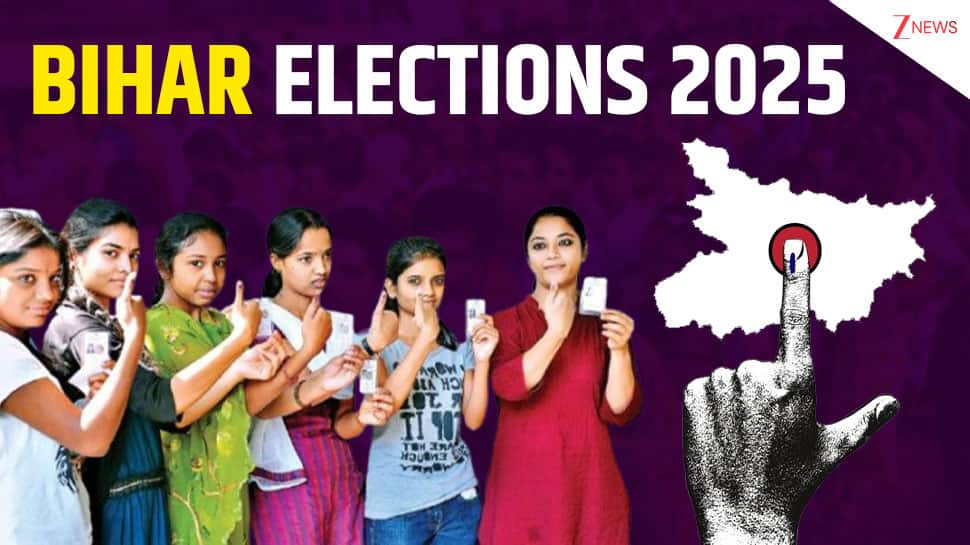Top Stories
Bihar Elections 2025: Women and Youth Shape Political Landscape

The Election Commission of India has scheduled the Bihar assembly elections for November 6 and November 11, 2025. With 243 assembly seats at stake, political parties are intensifying their efforts to secure voter support. Two particularly influential demographics in the state are women and the youth, specifically those born between 1997 and 2012, who represent a significant portion of the electorate.
Bihar boasts approximately 7.43 crore voters, of which around 3.5 crore are female and 1.77 crore are youth, including many first-time voters. Together, these groups make up over 50 percent of the state’s voting population. Their engagement is crucial for any party seeking to form a new government. Data from the ECI indicates that women in Bihar participated at a higher rate than men in the 2024 General Elections, with 59.39 percent of female voters casting ballots compared to 53.28 percent of male voters.
As political strategies unfold, the priorities of these groups diverge. While caste remains a vital element in Bihar’s politics, issues like job creation, infrastructure development, and women’s safety are increasingly important. The youth, in particular, express concerns regarding employment and educational opportunities.
Political Strategies Targeting Women and Youth
The ruling party, led by Nitish Kumar of the Janta Dal (United), has been active in appealing to female voters. Recently, the government transferred ₹10,000 to 21 lakh beneficiaries under the Mukhyamantri Mahila Rojgar Yojna, marking the third installment of this initiative. Meanwhile, the opposition coalition, known as Mahagathbandhan, which includes the Congress and Rashtriya Janata Dal (RJD), has promised to provide ₹2,500 per month to eligible women if they gain power.
Former Director at the A. N. Sinha Institute of Social Studies, D. M. Diwakar, notes that the demographic landscape is shifting in Bihar, primarily due to male migration for work. He asserts, “There will always be more women voters in Bihar because men migrate for jobs. So, their percentage will always be higher.” This trend is evident during elections held near festivals when migrant men often return home, temporarily increasing male voter numbers.
Identifying Key Issues for Engagement
Diwakar further explains that political parties often unveil new schemes just before elections, which can shape public perception positively. “Whenever elections come, political parties dominate the news and start implementing schemes based on their calculations,” he said. He highlighted that while direct financial transfers create a favorable image of government spending, the sustainability of these programs post-election remains uncertain.
The Leader of Opposition in the Assembly, Tejashwi Yadav, has also promised a future where “we will give you a Bihar that gives employment, respect, and security.” The NDA government claims it will create job opportunities for 50,000 more people, with an ambitious goal of providing jobs for one crore youth over the next five years.
Political scientist Anil Kumar Roy emphasizes that the motivations of women and youth vary significantly. “Youths are more concerned with exam-related problems and unemployment. Their dissatisfaction has been visible on the streets,” he said. Additionally, he pointed out that corruption and administrative mismanagement deeply frustrate the younger demographic.
Roy also addressed the ongoing relevance of caste in Bihar’s electoral dynamics. “The caste issue is a major issue in Bihar. Political parties are formed based on religion and caste, and candidates mobilize support along these lines,” he noted. He believes the role of youth and women in politics will only grow stronger in the coming decades.
As Bihar gears up for the 2025 Assembly Elections, experts agree that women and youth will play decisive roles, albeit for different reasons. Women voters are likely to turn out in greater numbers, bolstered by targeted welfare initiatives. In contrast, young voters are increasingly disillusioned with unmet promises concerning employment and education. For political parties, effectively understanding and addressing these nuanced realities will be crucial for success in one of India’s most complex political landscapes.
-

 World3 months ago
World3 months agoSBI Announces QIP Floor Price at ₹811.05 Per Share
-

 Lifestyle3 months ago
Lifestyle3 months agoCept Unveils ₹3.1 Crore Urban Mobility Plan for Sustainable Growth
-

 Science3 months ago
Science3 months agoNew Blood Group Discovered in South Indian Woman at Rotary Centre
-

 Sports3 months ago
Sports3 months agoBroad Advocates for Bowling Change Ahead of Final Test Against India
-

 World3 months ago
World3 months agoTorrential Rains Cause Flash Flooding in New York and New Jersey
-

 Top Stories3 months ago
Top Stories3 months agoKonkani Cultural Organisation to Host Pearl Jubilee in Abu Dhabi
-

 Science3 months ago
Science3 months agoNothing Headphone 1 Review: A Bold Contender in Audio Design
-

 Sports3 months ago
Sports3 months agoCristian Totti Retires at 19: Pressure of Fame Takes Toll
-

 Top Stories3 months ago
Top Stories3 months agoAir India Crash Investigation Highlights Boeing Fuel Switch Concerns
-

 Business3 months ago
Business3 months agoIndian Stock Market Rebounds: Sensex and Nifty Rise After Four-Day Decline
-

 Politics3 months ago
Politics3 months agoAbandoned Doberman Finds New Home After Journey to Prague
-

 Top Stories3 months ago
Top Stories3 months agoPatna Bank Manager Abhishek Varun Found Dead in Well









